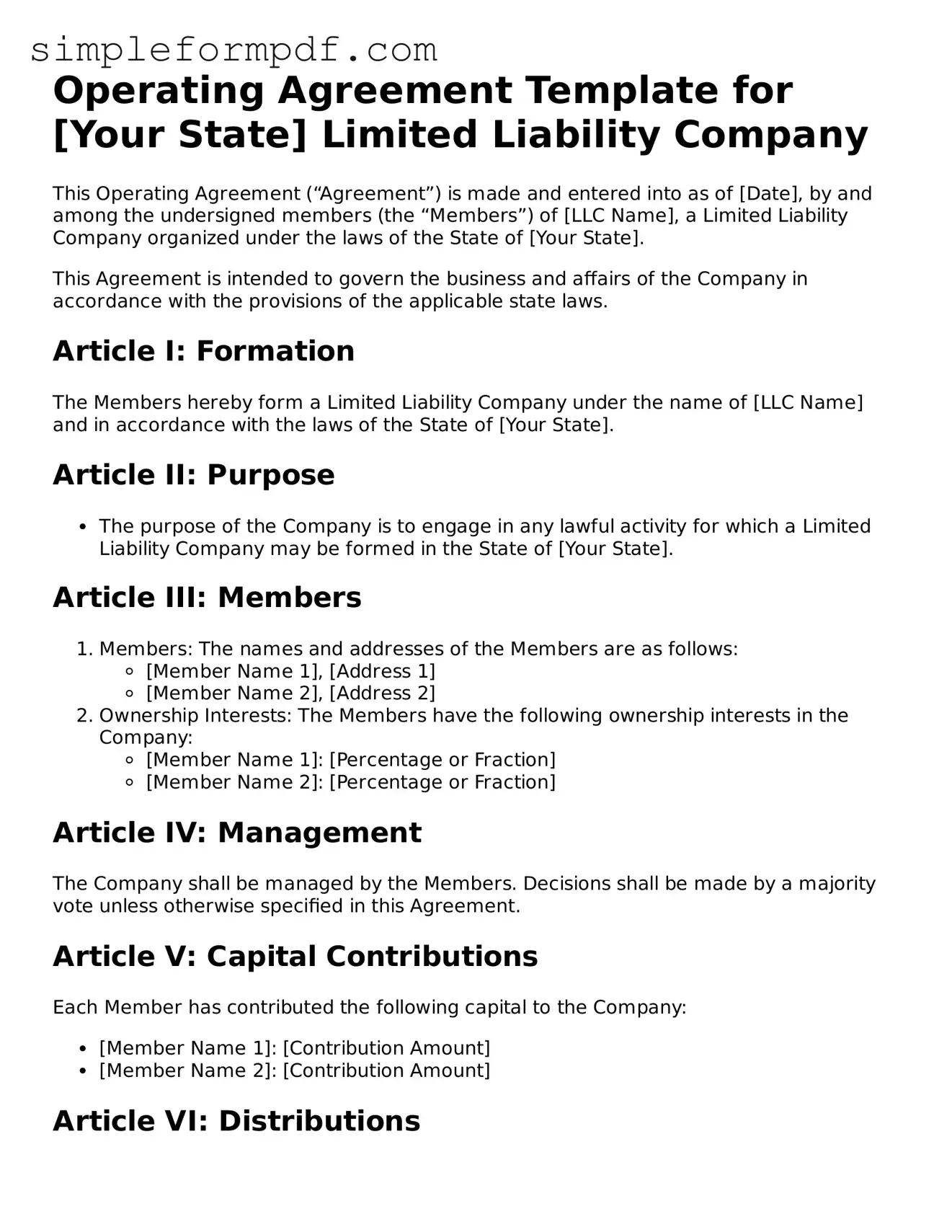Operating Agreement Template for [Your State] Limited Liability Company
This Operating Agreement (“Agreement”) is made and entered into as of [Date], by and among the undersigned members (the “Members”) of [LLC Name], a Limited Liability Company organized under the laws of the State of [Your State].
This Agreement is intended to govern the business and affairs of the Company in accordance with the provisions of the applicable state laws.
Article I: Formation
The Members hereby form a Limited Liability Company under the name of [LLC Name] and in accordance with the laws of the State of [Your State].
Article II: Purpose
- The purpose of the Company is to engage in any lawful activity for which a Limited Liability Company may be formed in the State of [Your State].
Article III: Members
- Members: The names and addresses of the Members are as follows:
- [Member Name 1], [Address 1]
- [Member Name 2], [Address 2]
- Ownership Interests: The Members have the following ownership interests in the Company:
- [Member Name 1]: [Percentage or Fraction]
- [Member Name 2]: [Percentage or Fraction]
Article IV: Management
The Company shall be managed by the Members. Decisions shall be made by a majority vote unless otherwise specified in this Agreement.
Article V: Capital Contributions
Each Member has contributed the following capital to the Company:
- [Member Name 1]: [Contribution Amount]
- [Member Name 2]: [Contribution Amount]
Article VI: Distributions
Distributions shall be made to the Members at such times and in such amounts as determined by the Members in accordance with their ownership interests.
Article VII: Indemnification
The Company shall indemnify the Members to the fullest extent permitted by law against any and all expenses and liabilities incurred in connection with the Company, provided that indemnification shall not be made for gross negligence or misconduct.
Article VIII: Amendments
This Agreement may be amended only by a written agreement signed by all Members.
Article IX: Miscellaneous
- Governing Law: This Agreement shall be governed by the laws of the State of [Your State].
- Severability: If any provision of this Agreement is found to be invalid or unenforceable, the remaining provisions shall continue in full force and effect.
Signatures
In witness whereof, the Members have executed this Operating Agreement as of the date first above written.
[Member Name 1] ________________________
[Member Name 2] ________________________
